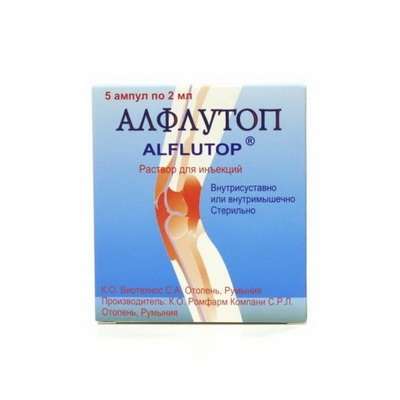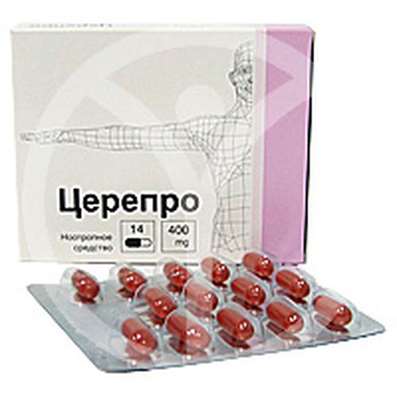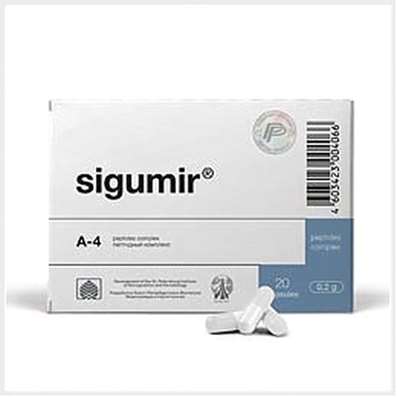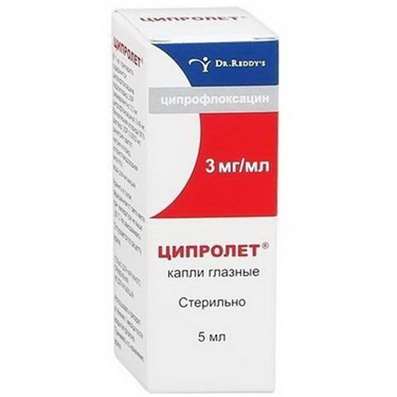Instruction for use: Flamax forte
I want this, give me price
Active substance Ketoprofen
ATX code M01AE03 Ketoprofen
Pharmacological group
Non-steroidal anti-inflammatory drug (NSAID) [NSAIDs - Propionic acid derivatives]
Nosological classification (ICD-10)
H60.9 External otitis, unspecified
Inflammation of external auditory canal, Otitis, Chronic external otitis media
H66.9 Otitis media, unspecified
Chronic otitis, Otitis, otitis media, middle ear infections, Otitis media in children
K08.8.0 * Painful toothache
Dentinal pain, Dentinal pains, Pain pulpitis, Anesthesia in dentistry, Pain syndromes in dental practice, Pain after removal of tartar, Pain when extracting a tooth, Toothache, Pain after dental interventions
M07.3 Other psoriatic arthropathies (L40.5 +)
Arthritis psoriatic, The generalized form of psoriatic arthritis, Psoriatic arthritis
M10.9 Gout, unspecified
Arthritis Gouty, Acute gouty arthritis, Acute attack of gout, Gouty Arthritis, Articular syndrome with exacerbation of gout, Articular syndrome with gout, Urarturia, Chronic arthritic arthritis, Acute gout, Salt diathesis
M13.9 Arthritis, unspecified
Arthritis,Purulent arthritis (non-infectious), acute Arthritis,Pain in acute inflammatory diseases of the musculoskeletal system,Pain in chronic inflammatory diseases of the musculoskeletal system,The pain in osteoarthritis, Inflammation in osteoarthritis, Inflammatory arthropathy, Inflammatory and degenerative joint diseases, Inflammatory disease of the musculoskeletal system, Inflammatory joint disease, Inflammatory diseases of the musculoskeletal system, destructive arthritis, The disease of the musculoskeletal system, Diseases of the musculoskeletal system, Diseases of the musculoskeletal system and connective tissue, Infections musculoskeletal system, monoartrit, Non-infectious arthritis, rheumatic arthritis, Osteoarthritis, Acute inflammation of the musculoskeletal tissue, Acute inflammatory diseases of the musculoskeletal system, Acute inflammatory condition of the musculoskeletal system, Acute arthritis, Acute osteoarthritis, Post-traumatic osteoarthritis, Reactive arthritis, Chronic inflammatory diseases of the joints, Chronic arthritis, Chronic inflammatory arthritis, Chronic inflammation of the inner layer of the joint capsule, Chronic inflammation of the joint capsule,Chronic inflammatory disease of the joints, Exudative arthritis
M19.9 Arthrosis, unspecified
Change in brush with osteoarthritis, Osteoarthritis, Osteoarthrosis, Arthrosis of large joints, Pain syndrome in osteoarthritis, Pain syndrome in acute inflammatory diseases of the musculoskeletal system, Pain syndrome in chronic inflammatory diseases of the musculoskeletal system, Deforming arthrosis, Deforming osteoarthritis, Deforming osteoarthritis of joints, Osteoarthritis in the acute stage, Osteoarthritis of large joints, Acute pain syndrome with osteoarthritis, Post-traumatic osteoarthritis, Rheumatic osteoarthritis, Spondylarthrosis, Chronic osteoarthritis
M25.5 Pain in the joint
Arthralgia, Pain syndrome in musculo-articular diseases, Pain syndrome in osteoarthritis, Pain syndrome in osteoarthritis, Pain syndrome in acute inflammatory diseases of the musculoskeletal system, Pain syndrome in chronic inflammatory diseases of the musculoskeletal system, Pain in the joints, Soreness of the joints, Soreness of joints in severe physical exertion, Painful inflammatory joint damage, Painful conditions of the musculoskeletal system, Painful joint conditions, Painful traumatic affection of joints, Pain in the musculoskeletal system, Pain in Shoulder Joints, Pain in the joints, Joint pain, Joint pain with injuries, Musculoskeletal pain, Pain with osteoarthritis, Pain in the pathology of the joints, Pain in rheumatoid arthritis, Pain in chronic degenerative bone diseases, Pain in chronic degenerative joint diseases, Bone-joint pain, Joint pain, Arthritic pain of rheumatic origin, Articular pain syndrome, Joint pain, Rheumatic pain, Rheumatic pains
M45 Ankylosing spondylitis
Ankylosing spondylarthrosis, Marie-Strumpel disease, Ankylosing spondylitis, Pain syndrome in acute inflammatory diseases of the musculoskeletal system, Pain syndrome in chronic inflammatory diseases of the musculoskeletal system, Bechterew's disease, Ankylosing spondylitis, Diseases of the spinal column, Rheumatic spondylitis, Bechterew-Marie-Strumpel disease
M54.1 Radiculopathy
Acute sciatica, Radiculopathy, Radiculitis, Radiculitis with radicular syndrome, Acute radiculopathy, Pain syndrome with radiculitis, Subacute radiculitis, Radiculitis, Chronic radiculitis, Diseases of the spinal column
M54.9 Dorsalgia, unspecified
Pain syndrome with radiculitis, Pain syndrome in the back,Pain with radiculitis, Degenerative changes in the spine, Degenerative and dystrophic disease of the spine and joints, Degenerative disease of the spine, Osteoarthrosis of the spine, Painful lesions of the spine
M71 Other bursopathies
Bursitis, Bursopathy, Diseases of soft tissues, Osteoarthritis in musculo-articular diseases, Inflammatory disease of soft tissues, Subacute bursitis
M77.9 Other unspecified
Capsule, Periarthritis, Tendonitis, Tendopathy, Periarthropathy
M79.1 Myalgia
Myofascial pain syndromes ,Pain syndrome in musculo-articular diseases, Pain syndrome in chronic inflammatory diseases of the musculoskeletal system, Pain in the muscles, Tenderness of muscles, Muscular soreness in severe physical exertion, Painful conditions of the musculoskeletal system, Pain in the musculoskeletal system, Pain in the muscles, Pain at rest, Muscle aches, Muscle pain, Musculoskeletal pain, Myalgia, Muscle pain, Muscle pain at rest, Muscle pain, Muscular pain of non-rheumatic origin, Muscle pain of rheumatic origin, Acute muscle pain, Rheumatic pain, Rheumatic pains, Myofascial syndrome, Fibromyalgia
M79.2 Neurology and neuritis, unspecified
Pain syndrome with neuralgia, Brachialgia, Occipital and intercostal neuralgia, Neuralgia, Neuralgic pain, Neuralgia, Neuralgia of intercostal nerves,Neuralgia of the posterior tibial nerve, Neuritis, Neuritis traumatic, Neuritis, Neurological Pain Syndromes, Neurological contractures with spasms, Acute neuritis, Peripheral neuritis,Post-traumatic neuralgia,Severe pain of a neurogenic nature, Chronic neuritis, Essential neuralgia
M89.9 Disease of bone, unspecified
Local osteopathy, Disturbance of bone mineralization processes, Osteopenia, Pain syndrome in acute inflammatory diseases of the musculoskeletal system, Pain syndrome in chronic inflammatory diseases of the musculoskeletal system, Pain in the musculoskeletal system, Infection of bones, Ossalgia, Pain in chronic degenerative bone diseases
N70 Salpingitis and oophoritis
Adnexitis, Inflammatory diseases of female genitalia, Inflammatory diseases of female genital organs, Infection of the genitals, Oophoritis, Acute adnexitis, Salpingitis, Salpingo-oophoritis, Chronic inflammatory diseases of the ovaries, Inflammation of the ovaries
N94.6 Dysmenorrhea Unspecified
Pain during menstruation, Functional disorders of the menstrual cycle, Menstrual cramps, Emmeniopathy, Pain during menstruation, Painful menstrual irregularities, algomenorrhea, algomenoreya, Pain smooth muscle spasm, Pain spasm of smooth muscles (renal and biliary colic, intestinal spasms, dysmenorrhea), Pain spasm of smooth muscles of internal organs (kidney and biliary colic, intestinal spasms, dysmenorrhea), Disalgomenoreya, dysmenorrhea, Dysmenorrhea (essential) (Exfoliative), menstrual disorder, menstruation painful, metrorrhagia, Violation of the menstrual cycle, Menstrual irregularities, Prolaktinzavisimoe menstrual disorders, Prolaktinzavisimoe menstrual dysfunction, Pain spasm of smooth muscles of internal organs, Spasmodic dysmenorrhea, Primary disalgomenoreya
R51 Headache
Pain in the head, Cephalgia, Pain with sinusitis, Pain in the back of the head, Painful headache, Headache of vasomotor genesis, Headache of vasomotor origin, Headache with vasomotor disorders, Headache, Neurological headache, Serial headache
R52.1 Constant unrestrained pain
Pain syndrome in oncology practice, Pain syndrome pronounced, Pain syndrome in malignant neoplasms, Pain syndrome in cancer, Pain syndrome with tumors, Pain syndrome in cancer patients, Pain in malignant neoplasms, Pain in malignant tumors, Pain in tumors, Pain in cancer patients, Pain in bone metastases, Pain in cancer, Malignant pain syndrome, Intensive chronic pain, Intensive pain syndrome, Intensive non-curable pain syndrome, Intensive chronic pain syndrome, Unrestrained pain, Unrestrained pain, Tumor pain, Post-traumatic pain syndrome, Severe pain, Chronic pain, Chronic Pain Syndrome
R52.2 Other constant pain
Pain syndrome, rheumatic origin, Pain at vertebral lesions, Pain in the chamber, Pain for burns, Pain syndrome weak or moderate, Perioperative pain,Moderate to severe pain, Moderately or weakly expressed pain syndrome, Moderate to severe pain, Ear pain of otitis, Neuropathic pain, neuropathic pain
R52.9 Unspecified Pain
Pain after cholecystectomy, Pain shooting, Non-malignant pain, Obstetric and gynecological pain, Pain syndrome, Pain in the postoperative period, Pain in the postoperative period after orthopedic surgery, Pain of inflammatory genesis, Pain than cancer genesis, Pain syndrome after diagnostic procedures, Pain after surgery Diagnostic, Pain after surgery, Pain after orthopedic surgery, Pain after injuries, Pain after the removal of hemorrhoids, Pain at the non-rheumatic inflammation of nature, Pain in inflammatory lesions of the peripheral nervous system, Pain in diabetic neuropathy, Pain in acute inflammatory diseases of the musculoskeletal system, Pain when the tendon pathology, Pain smooth muscle spasm, Pain spasm of smooth muscles (renal and biliary colic, intestinal spasms, dysmenorrhea), Pain spasm of smooth muscles of internal organs, Pain spasm of smooth muscles of internal organs (kidney and biliary colic, intestinal spasms, dysmenorrhea), Pain in trauma syndrome, Pain with injuries and after surgical interventions, Pain in chronic inflammatory diseases of the musculoskeletal system, Pain with duodenal ulcer, Pain syndrome in gastric ulcer, Pain syndrome in gastric ulcer and duodenal ulcer, pain, Pain during menstruation, pain syndromes, painful condition, Painful foot fatigue, Sore gums when wearing dentures, Soreness of the cranial nerves exit points, Painful menstrual irregularities, Painful dressings, Painful muscle spasm, Painful teeth growth, Melosalgia, Pain in the area of the surgical wound, Pain in the postoperative period, Pain in the body, Pain after diagnostic procedures, Pain after orthopedic surgery, Pain after surgery, The pains of the flu, Pain in diabetic polyneuropathy, Pain for burns, Pain during sexual intercourse, Pain during diagnostic procedures, Pain during therapeutic procedures, for colds Pain, Pain in sinusitis, Pain in trauma, Pain traumatic, The pain in the postoperative period, Pain after diagnostic procedures, The pain after sclerotherapy, Pain after surgery, postoperative Pain, Pain postoperative and posttraumatic, posttraumatic pain, Pain when swallowing, Pain in infectious and inflammatory diseases of the upper respiratory tract, The pain of burns, The pain in traumatic muscle injury, Pain in trauma, The pain of tooth extraction, The pain of traumatic origin, Pain caused by spasm of smooth muscles, Expressed pain syndrome, Expressed pain syndrome, traumatic origin, Postoperative pain, Post-traumatic pain, Post-traumatic pain syndrome, Torpid pain, Traumatic pain, Traumatic pain, Mild pain, Moderately severe pain, Moderate pain, Polyarthralgia with polymyositis
T14.9 Injury unspecified
Pain syndrome after trauma, Pain syndrome with injuries, Pain syndrome with trauma and after surgery, Pain in case of injury, Pain of a traumatic nature, Joint pain with injuries, Postoperative and post-traumatic pain, Pain in case of injury, Pain of a traumatic origin, Severe pain syndrome of traumatic origin, Deep tissue damage, Deep scratches on the trunk, Closed injury, Minor Household Injuries, Minor skin damage, Violations of the integrity of soft tissues, Uncomplicated trauma, Extensive traumatic injury, Acute pain syndrome of traumatic origin, Edema with trauma, Postponed sports injuries, Post-traumatic pain, Soft tissue injuries, Joint wounds, Sports injuries, Injury, Traumatic pain, Traumatic pains, Traumatic infiltrate,Injuries to sports
T88.9 Complication of surgical and medical care, unspecified
Pain in the postoperative period, Pain in the postoperative period after orthopedic surgery, Pain syndrome after diagnostic procedures, Pain after surgery Diagnostic, Pain after surgery, Pain after orthopedic surgery, Pain after the removal of hemorrhoids, Pain in the application of excimer laser, Pain with injuries and after surgical interventions, Pain syndromes in the dental practice, Painful diagnostic intervention, Painful diagnostic manipulations, Painful instrumental diagnostic procedures, Painful instrumental manipulation, Painful treatments, Painful manipulations, Painful dressings, Painful therapeutic interventions, Pain in the area of the surgical wound, Pain in the postoperative period, Pain after diagnostic procedures, Pain after orthopedic surgery, Pain during diagnostic procedures, Pain during therapeutic procedures, Pain in orthopedics, The pain in the postoperative period, Pain after diagnostic procedures, The pain after sclerotherapy, The pain after dental surgery, postoperative Pain, Pain postoperative and posttraumatic, The pain of tooth extraction, Inflammation after surgery or injury, Inflammation after orthopedic surgery, Inflammation after surgery, The inflammatory syndrome after surgery, Festering postoperative fistula, Operating wound, Complications after tooth extraction
Composition
Flamax®
Capsules 1 caps.
active substance:
ketoprofen 50 mg
auxiliary substances: lactose monohydrate; ICC; croscarmellose sodium; sodium lauryl sulfate; povidone; Silica colloidal dioxide
gelatin capsule composition: titanium dioxide; gelatin; indigo carmine FD & C blue
Flamax forte®
Tablets covered with a film membrane 1 tab.
active substance:
ketoprofen 100 mg
auxiliary substances: lactose monohydrate; rice starch; croscarmellose sodium; povidone; ICC; magnesium stearate; sodium lauryl sulfate; silicon dioxide colloidal; hypromellose; macrogol 6000; talc; titanium dioxide; brilliant blue
Description of dosage form
Flamax®
Capsules: hard gelatinous, No. 2 - white body with a lid of blue color. The contents of the capsules are a homogeneous white powder.
Flamax forte®
The tablets covered with a film cover: round, biconcave, blue color.
Characteristic
NSAID, a derivative of propionic acid.
pharmachologic effect
Pharmacological action - anti-inflammatory, antipyretic, antiaggregational, analgesic.
Pharmacodynamics
Has anti-inflammatory, analgesic and antipyretic, anti-aggregation effect. Suppresses the activity of COX-1 and COX-2, which regulate the synthesis of PG. The analgesic effect is due to both central and peripheral mechanisms. It has anti-bradykinin activity, stabilizes lysosomal membranes.
Pharmacokinetics
Absorption - fast, bioavailability - 90%. Up to 99% of absorbed ketoprofen binds to plasma proteins, mainly with albumin. Cmax in plasma is achieved quickly (0.5-2 hours after ingestion) due to low Vd (0.1-0.2 l / kg). Sss ketoprofen in plasma is achieved 24 hours after the beginning of its regular intake. Ketoprofen penetrates well into the synovial fluid and connective tissues. Cmax in the synovial fluid is 30% of the concentration in the serum, and after 4-6 hours after ingestion it exceeds it. Ketoprofen penetrates the BBB. Almost completely metabolized in the liver by glucuronation, has the effect of first passage through the liver. It is excreted by the kidneys (mainly) and the intestines (1-8%). T1 / 2 1.6-1.9 hours. In the elderly, T1 / 2 increases to 3-5 hours, in patients with renal insufficiency (Cl creatinine 20-60 ml / min) is about 3.5 hours. Does not cumulate.
Indications
inflammatory and degenerative diseases of the musculoskeletal system:
- rheumatoid arthritis;
- psoriatic arthritis;
- Bechterew's disease (ankylosing spondylitis);
- gouty arthritis (with an acute attack of gout, quick-acting dosage forms are preferred);
- osteoarthrosis;
pain syndrome:
- myalgia;
- ossalgia;
- neuralgia;
- tendonitis;
- Arthralgia;
- bursitis;
- radiculitis;
- adnexitis;
otitis media;
- headache and toothache;
- with oncological diseases;
- Post-traumatic and post-operative, accompanied by inflammation;
- algodismenorea.
Contraindications
hypersensitivity to ketoprofen or any component of the drug;
bronchial asthma in history caused by ketoprofen, other NSAIDs, incl. acetylsalicylic acid;
recurrent gastric ulcer and duodenal ulcer;
peptic ulcer;
severe hepatic impairment;
severe renal failure;
insufficiency of the circulatory system;
gastrointestinal, cerebrovascular and other bleeding (or suspicion of bleeding);
pregnancy and the period of breastfeeding;
children's age (up to 15 years);
hemophilia and other disorders of blood clotting;
ulcerative colitis, Crohn's disease, diverticulitis.
With caution: anemia, bronchial asthma, alcoholism, tobacco smoking, alcoholic liver cirrhosis, hyperbilirubinemia, hepatic and renal (because the drug is mainly excreted by the kidneys), diabetes mellitus, dehydration, sepsis, chronic heart failure, edema, arterial hypertension, IHD, blood diseases (including leukopenia), stomatitis, children's age (over 15 years), elderly age.
Side effects
From the digestive system: NSAID-gastropathy, abdominal pain, dyspepsia (nausea, vomiting, heartburn, flatulence, decreased appetite, diarrhea), stomatitis, taste change, ulceration and perforation of the gastrointestinal tract, gingival, gastrointestinal, hemorrhoidal bleeding; increased activity of hepatic transaminases in blood serum, hepatitis.
From the side of the nervous system: headache, dizziness, insomnia, agitation, nervousness, drowsiness, depression, asthenia, confusion or loss of consciousness, forgetfulness, migraine, peripheral neuropathy.
From the senses: noise or ringing in the ears, blurred vision, conjunctivitis, dry eye, eye pain, congestion hyperemia, hearing loss, vertigo.
From the CCC: an increase in blood pressure, tachycardia.
From the blood and organs of hematopoiesis: rarely - agranulocytosis, anemia, hemolytic anemia, thrombocytopenia, leukopenia.
From the urinary system: edematous syndrome, cystitis, urethritis, renal dysfunction, interstitial nephritis, nephrotic syndrome, hematuria.
On the part of the respiratory organs: hemoptysis, dyspnea, bronchospasm, rhinitis, laryngeal edema, epistaxis, dyspnea.
From the skin: skin rash, alopecia and eczema, exudative erythema, incl. Stevens-Johnson syndrome, toxic epidermal necrolysis (Lyell's syndrome), photodermatitis.
Allergic reactions: skin rash (including erythematous, urticaria), skin itching, rhinitis, angioedema, exfoliative dermatitis, anaphylactic shock.
Other: increased sweating, myalgia, muscle twitching, thirst, vaginal bleeding.
Interaction
Reduces the effectiveness of uricosuric drugs, enhances the effect of anticoagulants, antiplatelet agents, fibrinolytics, ethanol, side effects of SCS and mineralocorticosteroids, estrogens; reduces the effectiveness of antihypertensive drugs and diuretics.
Joint reception with other NSAIDs, GCS, ethanol, corticotropin can lead to the formation of ulcers and the development of gastrointestinal bleeding, an increased risk of kidney dysfunction. Simultaneous administration with oral anticoagulants, heparin, thrombolytic agents, antiaggregants, cefoperazone, cefamandol and cefotetan increases the risk of bleeding.
Increases hypoglycemic effect of insulin and oral hypoglycemic drugs (dose recalculation is necessary).
Inducers of microsomal oxidation in the liver (phenytoin, ethanol, barbiturates, rifampicin, phenylbutazone, tricyclic antidepressants) increase the production of hydroxylated active metabolites.
Co-administration with sodium valproate causes disruption of platelet aggregation.
Increases the concentration in the plasma of verapamil and nifedipine, lithium preparations, methotrexate.
Antacids and colestyramine reduce absorption.
Myelotoxic drugs increase the manifestation of hematotoxicity of the drug.
Dosing and Administration
Flamax®
Inside, during a meal. With rheumatic diseases - 1 caps. morning, 1 - afternoon and 2 - evening or 1 caps. 4 times a day. A combination of dosage forms is possible.
For patients with renal insufficiency, the dose is reduced to 33-50%, in elderly patients the dose is adapted to age.
In the treatment of pain syndrome and algodismenorea, the dose, if necessary, is 25-50 mg of ketoprofen every 6-8 hours.
The maximum daily dose is 300 mg.
Flamax forte®
Inside, during a meal. Adults - 1 table. 2-3 times a day (every 8 hours).
The maximum daily dose is 300 mg.
Overdose
Symptoms: There may be drowsiness, nausea, vomiting, abdominal pain, bleeding, liver and kidney dysfunction.
Treatment: symptomatic - gastric lavage and / or use of activated charcoal and / or other sorbents. There is no specific antidote.
special instructions
With the simultaneous use of ketoprofen and coumarin anticoagulants, incl. warfarin, or lithium salts, patients should be under strict medical supervision.
Care should be taken when prescribing the drug to patients with peptic ulcer diseases in history, kidney or liver failure. During treatment, it is necessary to monitor the picture of peripheral blood and the functional state of the liver and kidneys. If the kidney and liver function is impaired (increased ALT activity is the most sensitive indicator of NSAID-induced liver dysfunction), a dose reduction and careful monitoring is necessary.
If it is necessary to determine 17-ketosteroids, the drug should be discontinued 48 hours before the test.
Like the rest of the drugs in this group, it can mask the signs of an infectious disease.
With the development of violations from the eyes, consultation of the ophthalmologist is necessary.
During the treatment period, care must be taken when driving vehicles and engaging in other potentially hazardous activities that require increased attention and speed of psychomotor reactions.
Form of issue
Capsules, 50 mg. For 25 caps. in a plastic container with a cap screwed, with the control of opening. 1 plastic container is placed in a cardboard box.
Tablets, film-coated 100 mg. For 10 tab. in the blister pack. Two blisters are placed in a cardboard box.
Conditions of leave from pharmacies
On prescription.
Storage conditions
In a dry, the dark place at a temperature of no higher than 25 ° C.
Keep out of the reach of children.
Shelf life
3 years.
Do not use after the expiry date printed on the package.

 Cart
Cart





